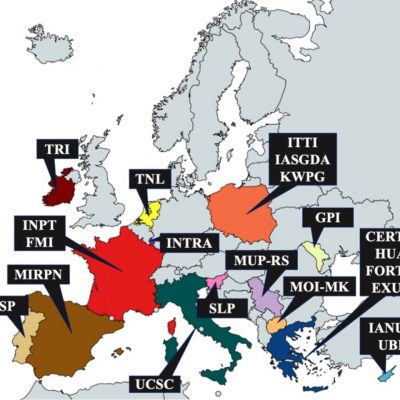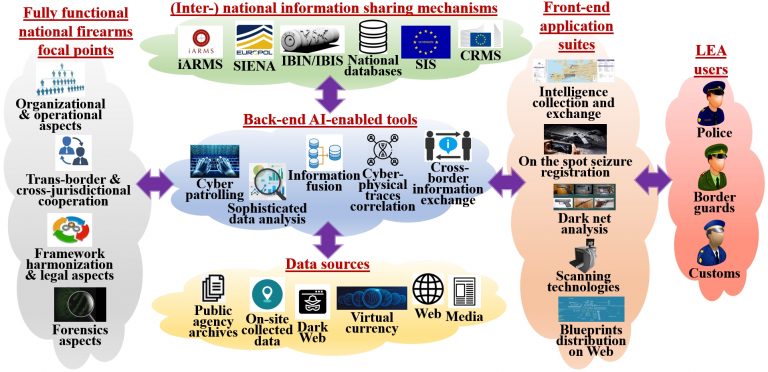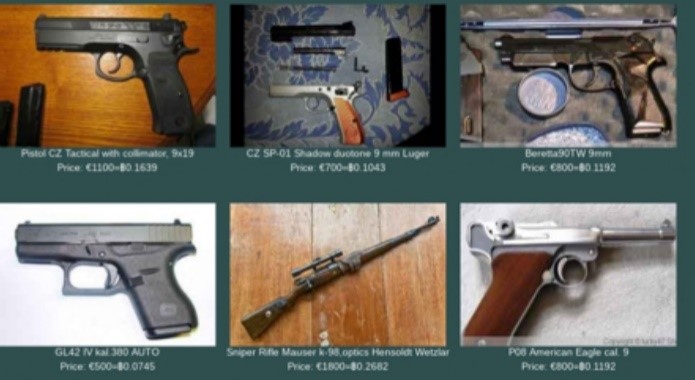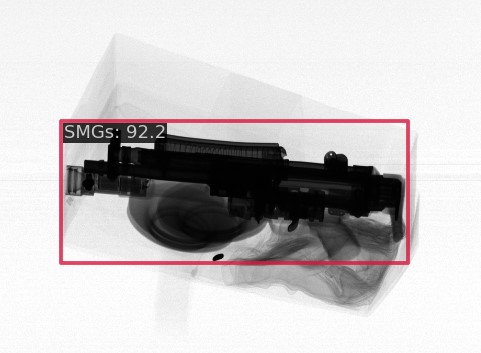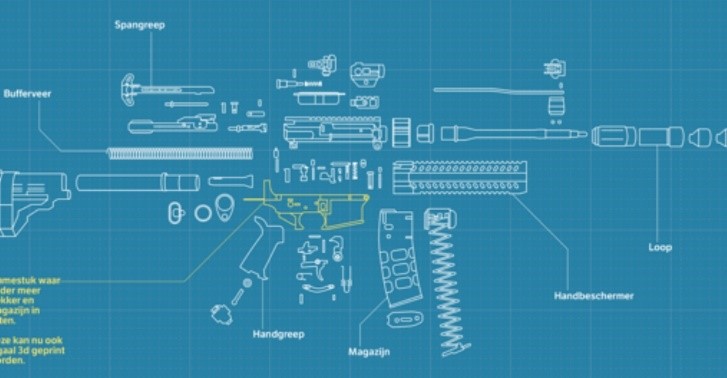Motivation and Goal
The European R&D project Ceasefire, funded by the EU’s Horizon Europe programme and launched in October 2022, has been designed to improve the crime-fighting ability of European nations using modern technology. Bringing together 21 expert partners from across Europe, under the coordination of Centre for Research and Technology – Hellas (CERTH, Greece), it is a 3-year Innovation Action focused on combatting firearms trafficking.
THE CHALLENGES
Trafficking of illicit firearms is one of the main sources of revenue for organized crime groups, while providing them the main tools for their antisocial trade: guns. Despite Europe’s relative social stability, this is true in the Old World as much as in the rest of the globe. Today’s digital economy and breakneck technological progress have made it even more difficult for state authorities to properly control the situation. Law Enforcement Agencies (LEAs) face difficult challenges that were not even conceivable just a few years ago.
- Modern criminals thrive and do their business in the dark corners of the Internet: Dark Web marketplaces. These are illegal e-shops, in the form of Web pages that cannot be reached by Google or other search engines; one has to explicitly know their URL to access them. On top of that, they are extremely volatile, constantly disappearing and re-appearing in new places, in order to avoid detection by the law.
- The anonymity offered by cryptocurrency transactions, such as Bitcoin, rendersthem very attractive for exchanges of illegal goods, such as firearms or drugs, in the Dark Web. Obviously, that level of anonymity makes it even more difficult for LEAs to track and identify involved criminals, in order to enforce the law.
- The regular “Surface” Web, along with social media, serves as a premium channel for information exchange and coordination between firearms traffickers. Although less anonymous as a medium, the sheer volume of information transferred daily over the Internet makes the detection, tracing and identification of such networks extremely difficult.
- The story does not end there: recent advances in 3D printing technology have led to the emergence of an extremely decentralized on-line community composed of gun “enthusiasts”, engaged in the digital distribution of weapon blueprints. As one can image, criminals often partake with fervor in such activities.
- Contemporary criminal groups do not hesitate to even take advantage of regular post and courier services, concealing guns or ammunition among licit goods within mailed parcels. This practice exploits gaps in European legislation, which, for example, may label a certain type of weapon illegal to possess in one country, but legal in another. The gigantic number of parcels transferred each day through customs and post services makes the detection and interception of such elegantly concealed firearms shipments exceedingly hard.
- Firearms seized during police investigations need to be identified and matched against international databases, in order to retrieve or update critical seizure and tracing information (for example: “Is the gun illegally possessed?” or, “Has it been previously used in criminal activities?”). Yet, the extremely high diversity in firearm appearance, the possible erasure of its serial number by criminals and the lack of specialized LEA practitioner training, make in-the-field identification of weapon characteristics a real challenge for authorities.
THE CEASEFIRE APPROACH
However, all hope is not lost. Artificial Intelligence (AI) holds the promise of automating much of the grunt work in which LEA practitioners regularly engage, in their attempt to stop firearms trafficking. If state authorities properly take up state-of-the-art AI technology and tools, their productivity has the potential to go through the roof, compared to the recent past.
Ceasefire, whose acronym means “Advanced versatile artificial intelligence technologies and interconnected cross-sectoral fully-operational national focal points for combating illicit firearms trafficking”, will try to achieve exactly that, by joining together the expertise of 7 companies, 5 research organizations and 9 LEAs directly involved with firearms trafficking, from all over Europe.
The Ceasefire consortium will build state-of-the-art, innovative AI tools and algorithms, aimed at boosting the abilities of state authorities to tackle firearms trafficking and related criminal activities at a faster pace than ever before. These tools will be complemented by targeted criminological analysis and by the generation of ethical guidelines, that will ensure the compliance of all project activities and outcomes with European law and values.
The use-cases of detecting and identifying illegal transactions of firearms using either the Dark Web, or the Surface Web and social media, will be a focal point for the project’s R&D activities. But Ceasefire does not limit itself to the detection of on-line trafficking activities. The project tackles off-line use-cases as well: the rapid, automated detection of concealed guns within mailed parcels, using security scans, as well as the on-the-spot identification of seized firearms through AI-enabled analysis of photographs. Data derived across the EU with such hi-tech means, as well as from more traditional sources (e.g., police reports, or news stories) will be intelligently and automatically combined in near-real-time through a pan-European incidence tracking digital tool, to be developed by the project. This will allow LEAs to efficiently collect, cross-correlate and internationally share intelligence information related to firearms trafficking, with only minimal manual effort. The creation of user-friendly software with such futuristic capabilities is now possible, thanks to recent scientific advances in various AI fields, ranging from computer vision and natural language processing to graph analytics.
Another important aspect of Ceasefire is a systematic effort to enhance international operational cooperation and information exchange across different LEAs, through technical means. Ceasefire will develop interoperable databases and common information access/sharing protocols, taking into account the needs of all sorts of state authorities that participate in the project. Finally, the project will foster fast uptake of its technical innovations in operational environments, through hosting relevant hackathons and delivering targeted training curricula, aimed at accelerating the acquisition of necessary skills by LEA officers.
Illegal arms trafficking is a major challenge for European society and law enforcement. Ceasefire represents a concerted EC-funded effort towards facing this threat, by putting state-of-the-art technology to good use.
Ceasefire Use Cases
Use-Case #2:
On-the-spot firearm seizure registration and cross-border data search.
Develop a mobile application to automatically and on-the-spot identify the main characteristics (e.g., brand, model, caliber, location of the serial number, etc.) of a seized firearm at the crime scene, in order to subsequently facilitate automatic search/update of information in relevant (inter-)national databases.

